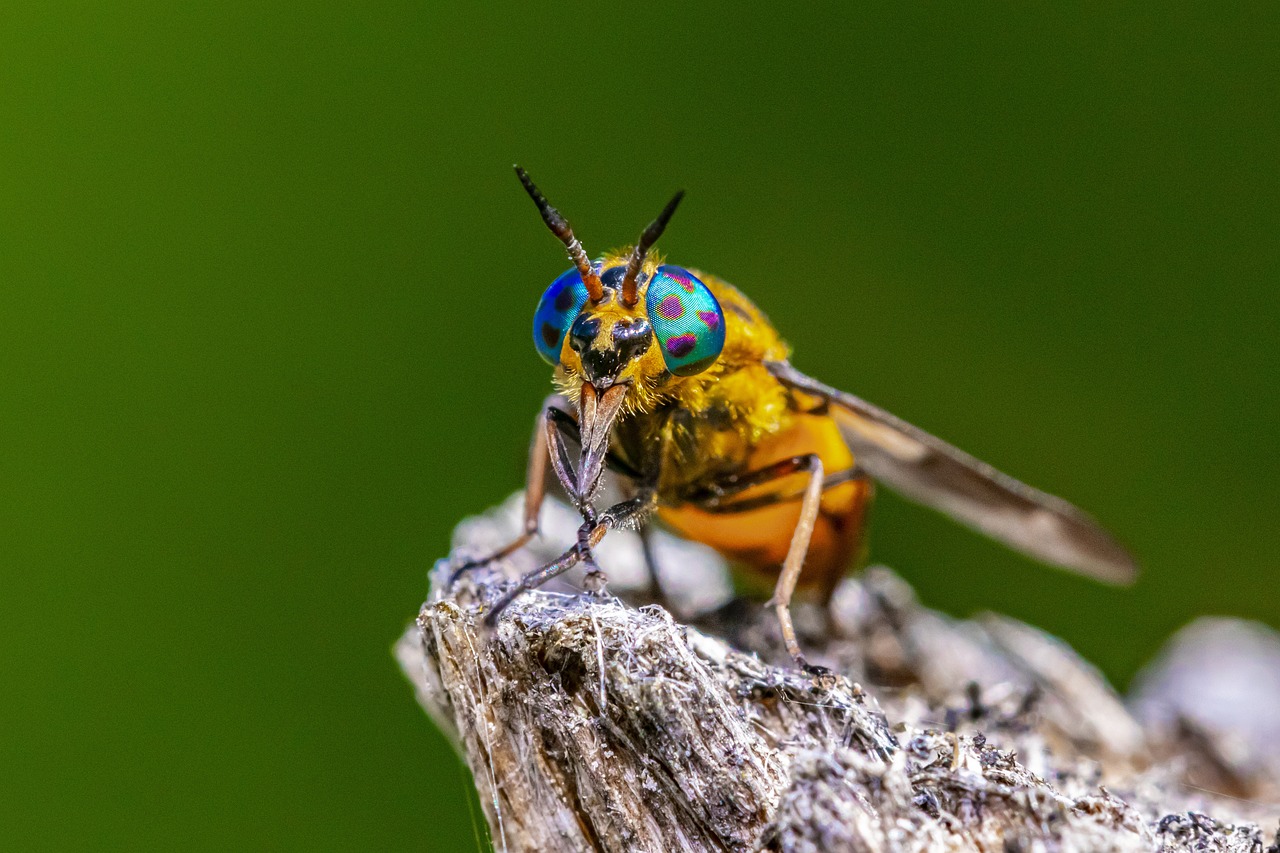The Splayed Deerfly (Chrysops caecutiens) is a member of the family Tabanidae, known for its biting behavior and distinctive appearance. Here are some key details about this species:
Appearance
- Size: Adult Splayed Deerflies are medium-sized, typically measuring about 7-10 mm (0.3-0.4 inches) in length.
- Coloration: They have a striking appearance with bright, iridescent eyes that often display bands of green, gold, and purple. The body is generally dark with yellow or brown markings on the abdomen.
- Wings: Their wings are clear with dark bands or spots, a characteristic feature that helps in their identification.
- Antennae: The antennae are short and stout, suited for their lifestyle.
Habitat
- Range: Chrysops caecutiens is found throughout Europe and parts of Asia, thriving in temperate regions.
- Environment: They prefer moist environments, often near water sources such as rivers, lakes, and wetlands. They can also be found in meadows, forests, and agricultural areas.
Behavior
- Feeding: Female Splayed Deerflies are hematophagous, meaning they feed on the blood of mammals, including humans. Males, on the other hand, feed on nectar and plant juices.
- Biting: Female deerflies use their sharp mouthparts to cut the skin and lap up the blood. Their bite can be painful and cause irritation.
- Activity: These flies are most active during warm, sunny days and are often seen hovering around potential hosts or resting on vegetation.
Life Cycle
- Reproduction: Mating typically occurs in the summer. After mating, females lay their eggs on vegetation near water or in moist soil.
- Eggs: The eggs hatch into larvae, which develop in wet soil, mud, or decaying organic matter. The larvae are predatory, feeding on other small invertebrates.
- Pupation: After several larval stages, they pupate in the soil. The pupal stage lasts a few weeks before the adults emerge.
- Adults: Adult Splayed Deerflies have a relatively short lifespan, focused on feeding and reproduction.
Adaptations
- Vision: Their iridescent eyes provide excellent vision, helping them locate hosts and avoid predators.
- Mouthparts: The females’ specialized mouthparts are adapted for piercing skin and feeding on blood, which is essential for egg production.
Ecological Role
- Pollination: While females feed on blood, male Splayed Deerflies contribute to pollination by feeding on nectar and visiting flowers.
- Food Source: They serve as prey for various predators, including birds, bats, and other insects, playing a role in the food web.
Conservation
- Status: Chrysops caecutiens is not currently considered endangered. However, habitat destruction and changes in land use can affect their populations.
- Management: Managing deerfly populations in human-inhabited areas can be challenging due to their painful bites. Protective clothing and insect repellents are commonly used to reduce bites.
The Splayed Deerfly (Chrysops caecutiens) is a distinctive and interesting species, known for its vibrant eyes and biting behavior. While they can be a nuisance to humans and animals, they play an important role in their ecosystems both as pollinators (males) and as part of the food web.
Visited 943 times, 4 visit(s) today
Views: 1289
Subscribe to the newsletter:
